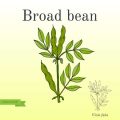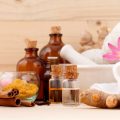Introduction to Herbal Tinctures and Infusions
Herbal tinctures and infusions have become increasingly popular in the UK, especially among those seeking natural approaches to wellness. These traditional preparations harness the therapeutic properties of common British plants, offering a way to support health using ingredients often found in local gardens or hedgerows. A tincture is a concentrated liquid extract made by soaking plant material in alcohol or vinegar, while an infusion typically involves steeping herbs in hot water—much like making tea. The key difference lies in their extraction methods: tinctures preserve active compounds longer and are more potent, whereas infusions are gentler and suitable for daily use. Their popularity stems from their simplicity, accessibility, and alignment with the UKs growing interest in holistic health practices. Whether addressing minor ailments or supporting overall wellbeing, tinctures and infusions allow individuals to reconnect with nature’s pharmacy through remedies tailored to local plants and personal needs.
2. Essential Equipment and Ingredients
Before you begin crafting herbal tinctures and infusions at home, assembling the right tools and sourcing quality ingredients is crucial. Below is a practical guide tailored to the UK climate and flora.
Necessary Tools for Home Herbalism
| Equipment | Purpose | UK Sourcing Tips |
|---|---|---|
| Sterilised Glass Jars | Macerating herbs in alcohol or water | Reuse glass jars from local shops or purchase from sustainable UK retailers |
| Fine Mesh Strainer or Muslin Cloth | Filtering plant material from liquid extracts | Easily found at high street kitchenware stores or online marketplaces |
| Dark Glass Bottles with Dropper Lids | Storage of finished tinctures/infusions to preserve potency | Look for UK apothecary suppliers or eco-conscious brands |
| Kilner-style Clip-top Bottles | Bigger batch infusions or vinegars | Available in most British supermarkets and homeware outlets |
| Digital Scale & Measuring Jug | Precise measurement of herbs and liquids for consistency | Standard kitchen equipment readily available across the UK |
Popular UK-based Herbs for Tinctures & Infusions
| Herb Name (Latin) | Main Uses/Benefits* | Typical Foraging Season** | Sourcing Advice (UK) |
|---|---|---|---|
| Elderflower (Sambucus nigra) | Immune support, cold relief, calming nerves | May – July (flowers), September – October (berries) | Forage rural hedgerows, ensure correct identification; avoid roadside plants due to pollution exposure. |
| Nettle (Urtica dioica) | Rich in minerals, supports urinary health, anti-inflammatory properties | March – November (young leaves best in spring) | Select from clean wild patches; wear gloves to harvest; rinse well before use. |
| Dandelion (Taraxacum officinale) | Liver support, gentle diuretic, digestive aid | March – October (leaves), April – June (flowers), autumn (roots) | Avoid chemically treated lawns; collect roots in late autumn for higher potency. |
*Benefits are based on traditional uses and emerging scientific evidence.
**Foraging should be done responsibly: always seek permission where necessary and follow the Countryside Code.
Sourcing Tips Tailored to the British Climate
- Cultivate Your Own: Many common medicinal herbs thrive in UK gardens or even window boxes. Organic compost and rainwater suit most native species.
- Sustainable Foraging: Only take what you need, leave plenty for wildlife, and avoid protected areas. Use reputable UK guides or local foraging groups to ensure correct plant identification.
- Bespoke Herb Suppliers: For those unable to forage, consider British herb farms or ethical online retailers specialising in UK-grown produce. Quality over quantity is key—look for organic certification when possible.
A Note on Alcohols and Solvents:
The most common solvent for tinctures is high-proof vodka or brandy, both widely available in the UK. For alcohol-free infusions, filtered water or cider vinegar are suitable alternatives.
This careful approach ensures your homemade remedies are both safe and effective, rooted in British tradition yet informed by modern standards of quality and sustainability.

3. Safety and Best Practices
When creating herbal tinctures and infusions at home, prioritising safety is paramount. Foraging for wild plants in the UK requires a good understanding of local flora, as well as an awareness of legal and environmental considerations.
Foraging Safely in the UK
Before you begin gathering plants, ensure you can confidently identify each species, as some wild herbs have toxic lookalikes. Use reputable field guides or attend local foraging courses led by experienced herbalists. Avoid foraging from roadsides or polluted areas to reduce the risk of contaminants. Always leave enough of the plant behind so it can regenerate, supporting sustainability and local biodiversity.
Legal Considerations
The Wildlife and Countryside Act 1981 protects many native plants in the UK, making it illegal to uproot most wild plants without landowner permission. When foraging on public land, check local bylaws, and always seek permission if you are on private property. Additionally, some species are protected or endangered—familiarise yourself with these lists before harvesting anything.
Accurate Dosage and Shelf Life
Homemade tinctures and infusions require careful attention to dosage. Start with small amounts and consult reliable sources or a qualified herbalist for guidance on safe intake levels for each herb. Use precise measurements when preparing tinctures, especially with potent plants like valerian or foxglove (the latter should not be used without expert supervision). To maximise shelf life, store finished tinctures in dark glass bottles away from direct sunlight; they typically last several years if prepared with high-proof alcohol. Herbal infusions are best consumed within 24–48 hours unless refrigerated.
Summary of Key Tips
- Identify all plants accurately before harvesting
- Follow legal guidelines and respect protected species
- Harvest responsibly to support the ecosystem
- Use precise recipes for consistent dosage
- Store preparations correctly to maintain potency and safety
Note:
If ever in doubt about plant identification or usage, consult an expert—safety first ensures you enjoy the full benefits of your homemade herbal remedies.
4. Step-by-Step Recipes: Tinctures with Common UK Plants
Herbal tinctures are a concentrated way to harness the benefits of British flora. Making tinctures at home is straightforward, provided you follow some essential steps for safety and efficacy. Below, you’ll find detailed, practical instructions using plants commonly found across the UK, such as nettle, elderflower, dandelion root, and hawthorn berries.
Basic Equipment Needed
- Glass jars with tight-fitting lids (sterilised)
- Ceramic or stainless steel bowls
- Fine muslin cloth or coffee filters
- Dark glass bottles for storage (with droppers if possible)
- Labels and marker pens
General Tincture-Making Process
- Harvest and Prepare Herbs: Gather fresh or dried herbs from clean, pesticide-free areas. Rinse gently and chop coarsely.
- Fill the Jar: Loosely fill a sterilised jar about halfway with your chosen herb.
- Add Alcohol: Cover the herbs completely with a high-proof spirit like vodka (at least 40% ABV). Ensure all plant material is submerged to prevent spoilage.
- Macerate: Seal the jar tightly. Store in a cool, dark place for 4–6 weeks. Shake gently every few days to aid extraction.
- Strain and Bottle: After maceration, pour through muslin or filter paper into a clean bowl. Squeeze out as much liquid as possible. Decant into dark glass bottles and label clearly with plant name and date.
Tincture Recipes with Local British Plants
| Plant | Main Benefits | Suggested Use (Traditional)* |
|---|---|---|
| Nettle (Urtica dioica) | Rich in minerals; supports urinary health | Add 1–2ml to water up to twice daily as a spring tonic |
| Elderflower (Sambucus nigra) | Aids respiratory comfort; mild diaphoretic | Take 1ml in water during cold season |
| Dandelion Root (Taraxacum officinale) | Liver support; aids digestion | Add 0.5–1ml to tea before meals |
| Hawthorn Berry (Crataegus monogyna) | Cardiovascular tonic; supports circulation | Add 1ml to water up to twice daily* |
*Always consult an appropriate healthcare practitioner before introducing herbal tinctures, especially if you have existing conditions or are taking medication.
Troubleshooting & Tips for Success
- If using fresh herbs, consider adding extra alcohol after a few days as they may absorb liquid.
- If cloudy or mould appears, discard the batch—this indicates contamination.
- Date and label each bottle clearly; most tinctures will keep for several years if stored away from heat and light.
- The standard adult dose ranges from 0.5–2ml per serving depending on herb strength and individual tolerance—start low and monitor response.
This step-by-step approach ensures your homemade tinctures are safe, potent, and tailored to local UK botanicals, making traditional herbalism accessible right from your kitchen cupboard.
5. Infusions for Everyday Wellness
Herbal infusions are a simple and effective way to harness the benefits of UK-native plants for daily wellbeing. Unlike tinctures, which use alcohol as a solvent, infusions involve steeping plant material in hot water—much like making tea. This gentle method extracts water-soluble compounds such as vitamins, minerals, and flavonoids, supporting both traditional uses and modern wellness routines.
Simple Herbal Infusion Recipes
Chamomile (Matricaria chamomilla)
A classic remedy for relaxation, chamomile is widely grown across the UK. To prepare: add 1–2 teaspoons of dried chamomile flowers to a mug, pour over boiling water, cover, and steep for 10 minutes. Strain before drinking. Traditionally used to support calmness and restful sleep.
Mint (Mentha spp.)
Mildly stimulating yet soothing on digestion, mint thrives in British gardens and hedgerows. Place a small handful of fresh leaves in a teapot or mug, cover with boiling water, and steep for 5–7 minutes. Strain and enjoy after meals to help relieve digestive discomfort.
Lemon Balm (Melissa officinalis)
This citrus-scented herb is valued for its calming effects and gentle support for mood. Use fresh or dried lemon balm leaves—about 1 tablespoon per cup—steeped in hot water for 7–10 minutes. A popular choice in traditional British herbalism for stress and mild anxiety.
Tips for Making Effective Infusions
- Always use freshly boiled water to maximise extraction of active compounds.
- Cover your infusion while it steeps to retain essential oils.
- Start with single herbs before experimenting with blends tailored to your needs.
Integrating Herbal Infusions into Daily Life
Enjoying herbal infusions can become a mindful ritual that supports everyday wellness goals. Whether sipped in the evening for relaxation or after meals to aid digestion, these easy-to-make drinks utilise readily available UK plants rooted in local tradition. Always consult reputable sources or professionals if you’re new to herbal remedies or taking medications, ensuring safe and effective use.
6. Storing and Using Your Homemade Remedies
Once you have crafted your herbal tinctures and infusions using common UK plants, correct storage is key to maintaining their potency and safety. For tinctures, which are typically alcohol-based, store them in dark glass bottles with tight-fitting lids to protect from light and evaporation. Keep these bottles in a cool, dry cupboard—ideally away from direct sunlight or heat sources such as the kitchen hob or radiators. When properly stored, most tinctures made at home can last for up to five years, though it’s wise to label each bottle with the date of preparation and the plant used.
Infusions, being water-based, have a much shorter shelf life. It is best to prepare only what you will use within 24 hours. If you must store them, keep the infusion in a clean glass jar in the fridge and consume within two days to avoid spoilage. Again, labelling is helpful for clarity and safety.
Practical Applications in Everyday British Life
Herbal remedies are becoming increasingly popular across the UK as part of a balanced approach to wellbeing. Tinctures can be added by drops to a small glass of water or herbal tea—elderflower tincture, for example, is often used during cold season. Chamomile or peppermint infusions make calming evening brews after a long day out in the unpredictable British weather.
Dosage and Caution
Always start with small doses—typically 10-20 drops of tincture diluted in liquid—and observe your body’s response. Consult a healthcare professional if you are on medication or have underlying health conditions, as herbs can interact with conventional medicines.
Everyday Integration Tips
Add a splash of nettle infusion to your breakfast smoothie for an iron boost, or use rosemary tincture as an invigorating addition to your morning routine. These remedies are not intended to replace medical treatment but can support everyday health when used responsibly and knowledgeably within the British context.


